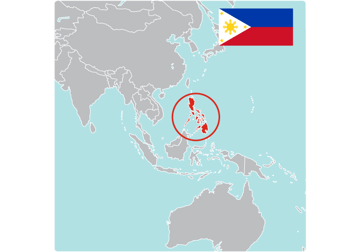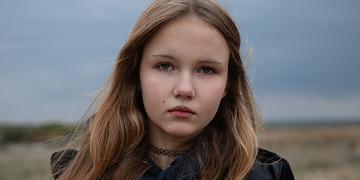EMERGENCY ALERT
Storm Trami, known locally as Kristine, has struck the Philippines, brining landslides and floods which killed at least 80 people.
The storm prompted widespread evacuations and affected 805,000 families, also disrupting learning for more than 19 million students. ��ɫ��Ƶis right now assessing needs and preparing to respond across the country by distributing hygiene kits, organizing cash handouts to families, and establishing temporary, safe learning spaces. Your donation to the Children's Emergency Fund supports this lifesaving work.
Help Children in the Philippines
The Philippines is highly vulnerable to the impacts of climate change. Rising sea levels, higher temperatures, and increased frequency of typhoons and extreme weather events have led to floods, landslides and land erosion that pollute water resources, damage infrastructure, destroy crops, and lead to loss of lives and livelihoods.
In 2022, the World Risk Index ranked the Philippines as the country with the highest disaster risk. What’s more, widespread poverty is a major obstacle to children reaching their full potential; girls and boys frequently miss out on education due to child labor and lack of access to schools.
The Challenges for Children in the Philippines
Living in poverty, with the constant fear of natural disasters, children of the Philippines need your help.*
22% of people live in poverty
27 out of 1000 children die before their 5th birthday
6% of school-age children are out of school
11% of children are engaged in child labor

Our Work for Children in the Philippines
��ɫ��Ƶhas a long history of responding to natural disasters in the Philippines. After Super Typhoon Haiyan, which left a massive path of destruction, we were among the first on the ground providing emergency relief. After the water subsided, we remained, supporting the rebuilding of homes and livelihoods of over 1 million people, including 826,000 children.
Since 1981, ��ɫ��Ƶin the Philippines has worked with local communities and organizations to design meaningful programs for kids.
Targeted to help children from early childhood to early adulthood, our programs work to make a healthy and safe environment where children can learn and grow. We nurture healthy moms and healthy babies by providing access to high-impact, low-cost care, working to stop preventable deaths in mothers and children.
Our early childhood programs help prepare toddlers and young children for school by giving them access to quality preschools and early literacy programs, while our programs designed for primary school-aged kids work to transform students into lifelong learners by building strong curriculums and passionate teachers.
Our work with adolescents focuses on that challenging transition between childhood and adulthood, helping ensure it’s a positive one by teaching them money, job and relationship skills. We also provide health education and care to children in need through our school health programs to help children stay healthy, well-nourished and in school.
Thanks to the generous support from our community of supporters, these essential programs in the Philippines continue to give children a healthy start and the opportunity to learn, protecting them from harm along the way.
Protected 16,082 children from harm
Supported 17,032 children in times of crisis
Provided 393,164 children with a healthy start in life
Supported 11,492 parents to provide for their children’s basic needs
How to Help Children in the Philippines
Support Save the Children’s mission. Donate to help children in the Philippines, and around the world, survive and thrive.
Join Team Tomorrow
Join Team Tomorrow and your monthly donation will go toward addressing the needs of children affected by today’s most urgent issues.
Browse the Gift Guide
Give a unique and meaningful gift that will bring joy – and change lives. Find something for everyone on your list.
Sources: * Unless otherwise noted, facts and statistics have been sourced from Save the Children’s monitoring and evaluation experts and from the 2019 Global Childhood Report. You can access detailed data here. Other sources as follows: Population: ; The World Bank, 2016; Unesco Institute for Statistics (UIS)



